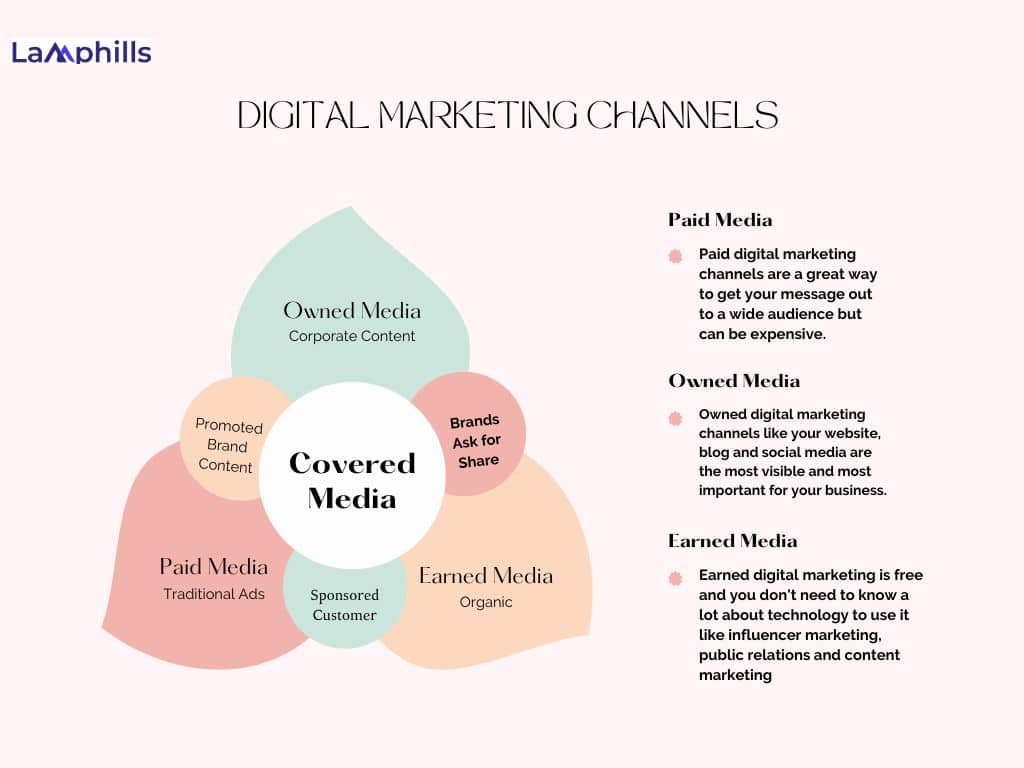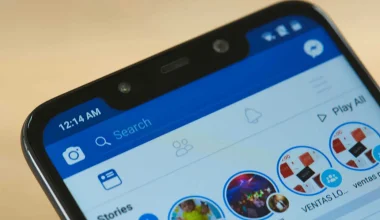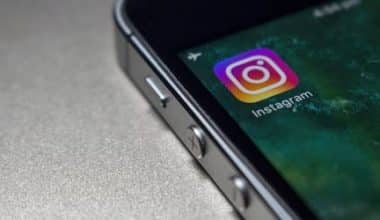We constantly needed new strategies to reach new audience and increase brand awareness when I was a communications lead for a company. That’s when we realized social media could be such a powerful medium to bring about this reach. Amplifying our message with the mixture of PR strategy and social media created a tremendous buzz. We engaged influencers using Twitter, thought leadership contents on LinkedIn, and behind-the-scene stories of our product development on Instagram. That was a game-changer for our overall PR efforts.
Social media for PR has become an intrinsic ingredient in modern brand building. Social platforms such as Facebook, Twitter, LinkedIn, and Instagram have stopped being everyday social sites. But have translated into whirlwinds of strong feelings in public relations. This differs from other service modes in that it allows a brand to tell its story, and interact with and engage its target audience while monitoring its corporate image in real-time. Done right, it churns brand awareness and takes PR to another level altogether. Let’s look at the best ways to use social media to boost PR efforts and brand awareness
Key Points
- Social media allows brands to communicate directly and instantly with their audience, enabling real-time feedback and transparency during important events or crises, and fostering trust and connection.
- Brands can share media coverage on their social channels. This helps to increase visibility and credibility, driving more traffic to the original articles and enhancing their overall media presence.
- Developing engaging and shareable content, such as infographics or viral videos, amplifies PR messages and extends brand reach, as demonstrated by successful campaigns like Coca-Cola’s “Share a Coke.”
- Partnering with influencers can significantly expand a brand’s reach and credibility, as their established follower base can amplify PR messages, exemplified by Nike’s impactful “Dream Crazy” campaign.
- Social media platforms are crucial for tracking public sentiment and managing crises in real time, allowing PR teams to respond promptly and maintain brand reputation, as seen in Facebook’s handling of security breaches.
Why Social Media Matters So Much to PR

PR on social media includes employing certain tags to spread the word about the newest marketing efforts, managing issues that could damage the company’s online reputation, and publishing content to foster a favorable brand perception.
Let’s consider, for instance, the one that defined digital marketing trends for several years—Share a Coke campaign. Or the timeless #ShotOniPhone UGC campaign that is still running with brand new ads today!
To sum up, as of right now, social media is an alternative to traditional media for exposing your business to your target audience. The primary goal is to create a positive image of the company and make people trust and follow the company.
Businesses can connect with their audiences through three categories of media: paid media, owned media, and earned media. 1. Paid media: Any sort of advertising that a company pays for, including pay-per-click (PPC) commercials, social media ads, and display ads. 2. Owned media: Content that a company generates and controls, such as a website, blog, or social media channel. 3. Earned media: This refers to any sort of media or recognition that a firm earns by acts or coverage by other parties, such as consumers, the media, or influencers.
See: Reputation Marketing: Building and Sustaining a Positive Brand Image
For some reasons, you do not have to wait for the media to publish your story and put your word out there, as in social media marketing; you do it yourself. This is a great benefit because you can publish it directly to the social media outlets and the platforms will handle the rest.
The advantages of using social media in PR include thus, broad coverage of your target audience and engaging them personally.
Check out: Audience Targeting: What It Is, Why You Need It and Best Tools to Use
People truly want to be associated with businesses, as seen by the fact that 90% of social media users follow at least one brand. To make sure that your reputation and brand are promoted, you should take advantage of this requirement. Let me show you why social media matters a lot to PR!
#1. Direct Communication with the Audience
Social media offers immediacy to an organization’s audience. This immediacy allows brands to converse quickly and receive feedback in real-time. From product launches to important announcements and crises, social media platforms will comprehensively enable organizations to reach out to their followers immediately and transparently.
See: Product Launch Press Release: How to Write With Examples
For instance, in events related to product recall, brands like Toyota have been able to keep customers updated on issues and simultaneously provide solutions in real-time using Twitter. This level of engagement engenders trust. Additionally, it ensures that whatever a brand desires to say about the situation is aired before the escalation of the situation in the media.
#2. Expanding Press Coverage
When a company is featured in the news, it can then use that press coverage and share the coverage on its social media platforms. This happens after, for example, a brand has appeared in Forbes or TechCrunch. Once this connection is made on social channels, visibility is increased. Likewise, this encourages users to engage in that article and drives more traffic to the media outlet involved through increased credibility.
#3. Creating Shareable Content
Social media is all about shareable content that can amplify your PR messages. One single great infographic, one viral video, or news story can spread far and beyond all of your immediate followers. A brand can create content around its PR campaigns to extend its reach and visibility.
The way Coca-Cola, for example, has driven this impeccably with its “Share a Coke” campaign: The brand encouraged its customers to post pictures of Coke bottles with their names on social media. That is not only spreading brand awareness, but it is building a personal rapport with your consumers and making them an advocate of one’s brand.
#4. Influencer Collaboration
Influencer partnerships are a great method of leveraging social media to achieve PR. Working with influencers who share values can increase your reach many folds since they already have loyal followers, which adds to their word’s credibility.
See: How to Create the Best Influencer Marketing Campaigns: A Comprehensive Strategy Guide
For example, when Nike ran the “Dream Crazy” campaign featuring Colin Kaepernick, the company extended the message through social media influencers and other athletes voicing support for the cause. It generated millions of conversations online and reaffirmed Nike’s brand image of being a company that stands for bold values.
#5. Monitoring and Crisis Management
PR professionals can use social media to track sentiment and act the instant a crisis arises. Twitter is important in almost any PR crisis-a place where a company can track the conversation, respond promptly, and manage a company’s character, for one. Social media tools like Hootsuite and Sprout Social track brand mentions and sentiment to help PR teams react quickly.
For example, when a security breach occurred, Facebook used social media to update its status in real-time on the situation at hand, meaning they are in control and there was no panic amongst the users.
Best Ways to Use Social Media for PR Efforts
Here are some practical ways you can optimize the reach of your PR campaigns through social media.
#1. Create a Consistent Message Across All Channels
The usage of social media in the management of public relations is all about consistency. It needs to be the same across all platforms. Whether it is announcing a product or even a statement related to a crisis, consistency means that the audience is getting the same message irrespective of the platform. Carefully write press releases, social media posts, and statements; they must complement the wider PR strategy.
#2. Extend Reach Using Hashtags
Hashtags do a fantastic job of amplifying such PR efforts. They grant discoverability to any content out there. If you are using trending or relevant hashtags, then the possibility of such posts getting discovered by users interested in similar subjects is increased. For example, if you launch a certain new product, create a special hashtag for the event and ask all your followers to use it.
All the time, Starbucks does this with its seasonal campaigns, like #RedCupSeason, creating engagement and driving conversations about its brand promotions.
#3. Leverage Real-Time Engagement
Real-time participation is what social media is all about. Thus, it’s perfectly suited for events and real-time updates. During events, such as product launches, Q&A sessions, or press conferences, live-tweeting or Instagram stories is one of the means through which the brand keeps the audience amused.
For instance, taking Tesla as an example, when they launched their latest product, they streamed the event on all available social media platforms so that millions could tune in and interact with this brand in real-time.
#4. Integrate User-Generated Content (UGC)
User-generated content is the most powerful way to amplify your PR efforts. Encourage your audience to create content with your brand or campaign. It will build a community and enhance brand credibility in one go. After all, people trust recommendations from other users way more than direct brand marketing, which is why UGC is invaluable for PR.
Brands, such as GoPro, have mastered this by building an entire social media presence out of user-generated content. GoPro users post videos and photos that they have taken using the camera onto various sites for all to see. Material like this serves as organic testimonials and helps to build up GoPro’s adventurous brand identity in consumers’ minds.
#5. Involve Journalists and Media Directly
Social media has transformed into a crucial tool for journalists when story-seeking. You could pitch ideas or send press releases and, sometimes, even DM journalists with crucial updates. Building relationships through key media contacts on LinkedIn or Twitter could open up bigger coverage.
For instance, PR teams often tweet at journalists or tag them in posts about their beats to provide quick access to breaking news or announcements.
#6. Measure PR Success with Analytics
Finally, it is time to measure the effectiveness of the PR efforts using social media outlets. With the use of tools such as Google Analytics, Twitter Insights, and Facebook Business Suite, one gets to see how well the posts do, what kind of content sits best with the audience, and just how effective the campaigns have been at driving brand awareness.
This data will be utilized further by the PR team to strategize and optimize the content for better engagement. For instance, if your launch video received more engagement on Instagram compared to Facebook, you might want to shift more to visual content for the subsequent campaigns.
Checklist of How Brands Can Measure PR Success with Analytics
Examples of Brands Boosting PR with Social Media
- Red Bull: This company has nailed every form of marketing and PR with high-energy, extreme sports, and adventure. Their social media platforms are filled with user-generated content coming right from the athletes themselves, creating a community of fans who relate to this brand. The Red Bull Stratos Jump, where Felix Baumgartner broke the barrier during freefall from the edge of space, was broadcast live on social media and generated massive media buzz.
- Wendy’s: The path of Wendy’s in condensing its brand into a social media powerhouse has been nothing short of meteoric, further catalyzed by its sassy and witty online persona. All jokes and quips aside, the brand has kept fresh and engaging. And the guys on social media didn’t stop there with PR stunts such as “National Roast Day,” wherein people asked to be roasted by the brand.
Hint: There is no doubt that social media has today become an indispensable tool for every PR strategy. The effectiveness of using social media is that it allows brands to speak directly to their audience, amplify press coverage, and manage their identity and image in real-time. Used strategically, social media enhances brand awareness, deepens engagement, and generates lasting conversations. Mastering the art of integrating social media can exponentially raise your brand’s reputation, as a PR professional.
How Can Social Media Be a Powerful PR Publication Tool?
Social media is very useful in that it gives brands a straight line to audiences and allows them to share important news immediately, react, and create engagement. Non-traditional media can then be used effectively to drive brand values, tell stories, and gain coverage in areas where brands may not have to deal with increasingly expensive media firms.
How does Social Media Help PR?
Social media helps PR by including real-time conversation, and repetition of brand messages through share/ engagement, and facilitates control of any emerging crisis. Social media also aids in pinpointing PR messaging and getting to such target markets more easily.
Why Is Social Media Good for Publicity?
Social Media is good for publicity because it is cheaper, can reach a large audience, and increases its observability. Consumers can be engaged and interact with a brand using social media as a tool for generating content as well as interacting with popular influencers.
How to Use Social Media for Publicity?
- Engaging with their audience regularly.
- Creating shareable, relevant content.
- Collaborating with influencers.
- Using platforms like Twitter and Instagram for announcements and campaigns.
- Monitoring feedback and responding quickly to both positive and negative mentions.
Bottom Line
Any PR campaign today needs social media as a key implemented element. It enables a brand to engage audiences and consolidate and promote press mentions. Likewise, it monitors and reacts to reputation occurrences in stealth. Social media is not only an effective tool for spreading the word about a particular brand. It also increases its interaction and evokes long-term discussions. For PR professionals, it will be fascinating to know that the management and perfect mastery of the integration of social media can place your brand’s reputation on a new level.
Related Posts
- What is Vlogging? Proven Tips To Succeed With Vlogging
- How to Search and Use Instagram Effects Like a Pro
- Hootsuite Review: Is This the Best Social Media Tool for Your Business?
- 15 Best Examples of Product Videos for Marketing





